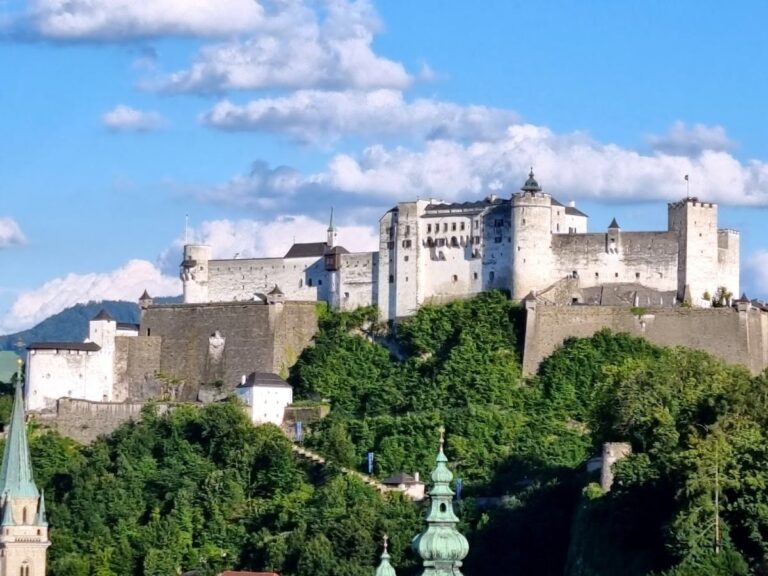Burgruine Plainburg: A Historic Castle Ruin Near Großgmain, Austria
Visitor Information
Google Rating: 4.2
Popularity: Low
Google Maps: View on Google Maps
Country: Austria
Civilization: Unclassified
Remains: Military
History
Burgruine Plainburg is located near Großgmain in Austria and is recognized as one of the region’s oldest castle ruins. Its significance extends far beyond medieval times, as the site was originally used as a Celtic burial ground around 1200 BCE, demonstrating its long-standing importance in the landscape. Later, during the Roman era, it appears that a fortification—known as a kastell—stood at this strategic location, pointing to continuous military use during Roman control of the area.
The medieval history of Plainburg begins in the early 12th century. Around the year 1100, Comes Werigandus de Playen established the inner courtyard and the gatehouse, foundations for what would become a defended hilltop castle. The first written reference to the fortress appears approximately in 1140 under the name Plagien Castrum. The castle served as the seat of the Plainer family until their extinction in 1260.
Following this period, the castle’s ownership transferred in 1292 to the Archbishopric of Salzburg, marking a shift in its role. Under ecclesiastical control, Plainburg functioned primarily as a fortress protecting vital salt trade routes connecting Bad Reichenhall and Salzburg. This military role was reinforced by a series of building modifications between the late 15th and the 18th centuries to adapt to evolving defensive needs. Notably, Archbishop Paris von Lodron undertook restoration work in 1620, and in 1674, the gatehouse was remodeled in the Gothic style, prominently displaying the coat of arms of Archbishop Max Gandolf Freiherr von Kuenburg.
The castle’s military importance diminished by the late 18th century. In 1796, the fortress was permanently abandoned by soldiers, ending its active defensive role. Later preservation efforts by King Ludwig I of Bavaria and Prince Otto von Bismarck were unsuccessful, leading to the ruin’s gradual deterioration. During restoration work in the 1970s, a child’s skeleton was discovered immured within the walls—an event that echoes a local legend of a child being sacrificed and sealed within the castle as a foundation ritual or protective act.
Today, Burgruine Plainburg stands as a historic monument, integrated into the network of fortifications known as the Reichenhaller Burgenweg, which links seventeen castles and defensive sites across the region through a long-distance hiking trail.
Remains
Situated atop a hill roughly 1.5 kilometers from Großgmain’s center and reaching an elevation of approximately 643 meters, the ruins of Plainburg offer commanding views over the Gmainer Valley and nearby towns. The site retains substantial sections of its defensive structures, including exterior walls standing more than five meters tall and averaging about 1.45 meters in thickness. These robust walls define the inner courtyard and entrance zone, providing a clear sense of the castle’s original fortified layout.
The inner courtyard and gatehouse represent the earliest medieval components, dating back to the early 12th century. The gatehouse, notable for its Gothic renovation in 1674, features a heraldic coat of arms above the entrance attributed to Archbishop Max Gandolf Freiherr von Kuenburg. This entrance connects the inner and outer courtyards, marking a pivotal point in the castle’s defensive architecture. The outer courtyard’s walls differ in construction style, exhibiting a less refined masonry technique and showing significantly greater stages of wear and decay compared to inner defenses.
Strategically, the eastern side of the castle, where the gatehouse stands, was vulnerable. To counter this, defenders designed a winding access path with two long curves that ascend steeply toward the gate, forcing any attackers to expose their right, unshielded side to the castle’s defenders, improving the fortress’s defensive capabilities.
An observation platform extends from the site, offering expansive views over the surrounding landscape. Although closed to the public year-round, this feature underscores the castle’s historical role as a lookout and military stronghold. Preservation and structural stabilization efforts over the years have helped maintain these remnants, including the 1970s restoration work during which the child’s skeletal remains were discovered embedded within the masonry, lending a tangible dimension to the site’s associated local legends.










